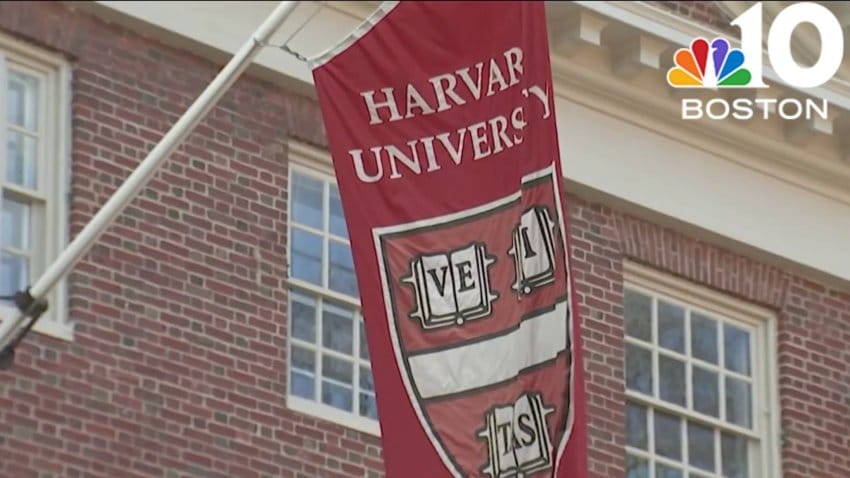Harvard’s Political Stance and Financial Challenges in the Trump Era
Harvard University, the crown jewel of American higher education, finds itself navigating turbulent waters as it takes a bold stance against former President Donald Trump while simultaneously facing unprecedented financial pressures. With a staggering $2 billion in federal funding frozen and its $53 billion endowment under scrutiny, the university’s recent decisions are reshaping its relationship with political powers and financial institutions alike. These developments come at a time when elite universities across the nation are facing increased government oversight, making Harvard’s current predicament particularly significant.
A Defining Moment in Harvard’s Political History
The New York Times recently characterized Harvard’s decision to resist Trump-affiliated programs as having ‘momentous significance.’ This stance represents more than just another campus political debate—it marks a fundamental shift in how one of America’s most prestigious institutions engages with political power. The university has reportedly rejected funding from Trump-aligned organizations, limited speaking engagements by prominent Trump supporters, and revised curriculum guidelines to exclude materials deemed politically motivated.

This bold position comes after years of tension between Trump and elite universities, with the former president frequently criticizing what he called ‘radical left indoctrination’ on college campuses. Harvard’s current administration, led by President Alan Garber, appears to be drawing a clear line in the sand, potentially setting a precedent for how other universities might handle similar political pressures in our increasingly polarized climate.
Read also: thiv.com/
The $2 Billion Funding Crisis
Even as Harvard makes waves with its political stance, NBC Boston reports the university faces its most severe financial challenge in recent memory. The federal government has frozen more than $2 billion in funding—a move that affects critical research programs, financial aid packages, and infrastructure projects. This dramatic action has forced Harvard to seek emergency financing from Wall Street, an extraordinary measure for an institution with the largest academic endowment in the world.
The funding suspension stems from growing congressional scrutiny of how elite universities manage their massive endowments. Lawmakers from both parties have questioned why institutions with such enormous resources continue receiving substantial government support. This financial crisis comes at a particularly challenging time, as Harvard was already facing pressure to control skyrocketing tuition costs and demonstrate greater financial transparency to students and families.
Government Scrutiny and the Future of Academic Freedom
A Wall Street Journal investigation reveals the broader context of Harvard’s challenges, detailing how government task forces are conducting sweeping reviews of university operations. These oversight bodies, particularly those examining issues like antisemitism and financial accountability, represent an unprecedented level of government involvement in higher education administration.
For Harvard, this means operating under intense scrutiny while trying to maintain its academic independence. The university must balance competing pressures from progressive faculty demanding stronger institutional stances on political issues and conservative lawmakers pushing for greater oversight. This delicate balancing act has become increasingly difficult in our hyper-partisan climate, with Harvard’s every move analyzed by stakeholders across the political spectrum.
The Endowment Dilemma
Harvard’s $53 billion endowment—the largest academic fund in the world—has become both its greatest asset and its biggest liability in the current crisis. While providing financial security, it has also made the university a target for critics questioning why such a wealthy institution needs government support. The funding freeze has reignited debates about endowment spending rules, with some lawmakers proposing legislation that would require universities to spend a minimum percentage annually or face tax penalties.
University administrators argue that most endowment funds are restricted by donor agreements for specific purposes like professorships or building projects. However, the current crisis has forced difficult conversations about whether these decades-old restrictions should be reevaluated to address today’s financial realities. How Harvard navigates this endowment dilemma could reshape university finance models nationwide.
Implications for Students and Faculty
The real-world impacts of these developments are already being felt across Harvard’s campus. The funding freeze threatens to delay groundbreaking research in fields from medicine to climate science. Financial aid programs face uncertainty just as application season begins. Faculty report increasing difficulty securing grants for their work, while students worry about rising costs and potential cuts to academic programs.
Prospective students and their families are watching developments closely, as Harvard’s reputation and financial stability factor heavily into college decisions. The university’s ability to navigate these challenges while maintaining its academic excellence will be crucial in determining whether it remains the gold standard of American higher education.
A Watershed Moment for Higher Education
Harvard’s current predicament reflects broader tensions reshaping American academia. Universities nationwide grapple with questions about their role in political discourse, their financial models, and their relationships with government entities. As the nation’s oldest and most prestigious university, Harvard’s responses to these challenges will likely influence how other institutions approach similar issues.
The coming months will be critical for Harvard as it seeks to stabilize its finances, maintain its academic mission, and navigate an increasingly polarized political landscape. The decisions made today by President Garber and Harvard’s leadership could shape the institution’s trajectory for generations to come, with implications that extend far beyond the ivy-covered walls of its Cambridge campus.
